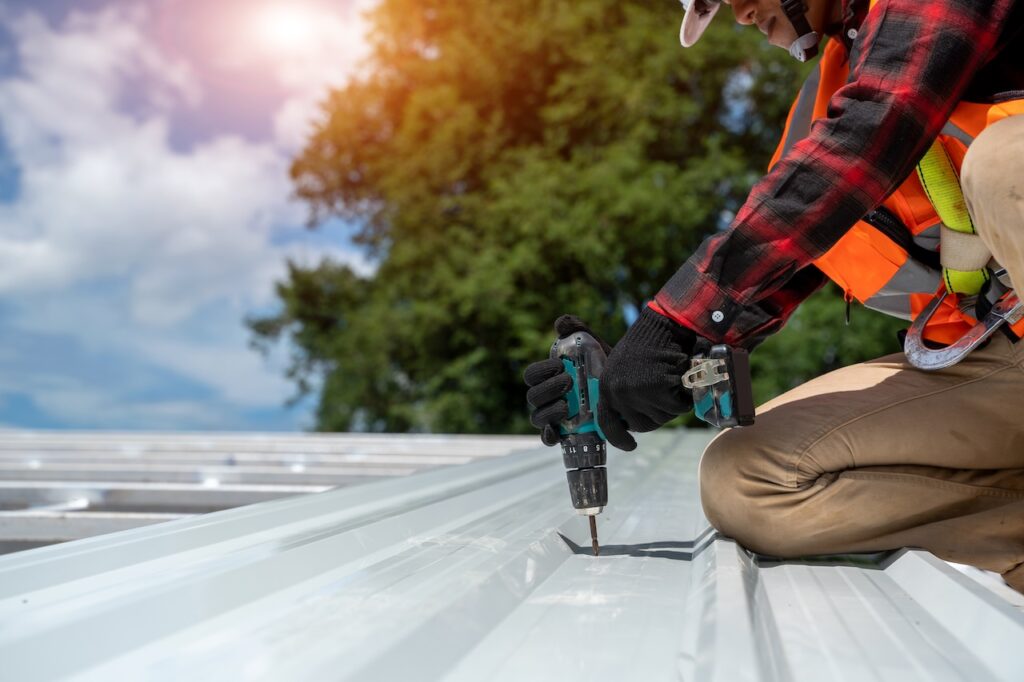It’s finally time. You and your boss have watched the roof of your warehouse throughout the years, knowing that one day, you’d have to replace it. You’ve had a few repairs done in the past, but with the roof starting to sag, it’s time for a full refresh.
But how much does a commercial roof replacement cost? This guide will walk you through the factors that affect costs, break down typical expenses, and give you a better handle on what your budget should look like.
Factors Affecting Replacement Costs
A professional inspection from a licensed contractor will help you get a more specific commercial roof replacement cost, but if you want a general estimate, there are several elements that will influence your overall price. Here are a few of the most important ones:
1. Roof Size and Complexity
The size of your roof is a fixed and major cost driver. Roof replacement is usually priced per square foot. Plus, a simple, flat roof will be less expensive to replace than a complicated design with slopes, multiple levels, skylights, or HVAC systems.
2. Roofing Material
While each material has its pros and cons, your contractor can help you choose the best option for your needs and budget. Common materials include built-up roofing (BUR), metal roofing, modified bitumen, and single-ply membranes like TPO, PVC, and EPDM.
3. Labor Costs
Labor costs can vary depending on the region, complexity, and worker availability. If your roof is more complicated, a larger crew or additional hours may increase your labor expenses.
4. Accessibility
If your contractor has easy access to the roof, that can help reduce costs. For example, a one-story building in an open area is less expensive to replace than a high-rise in a congested city. If you don’t have a lot of space for equipment storage, that can sometimes add to your bill because the crew can’t store much onsite.
5. Insulation and Energy Efficiency Upgrades
If you have to replace your roof, it might be a good opportunity to improve your energy efficiency. Many property owners opt for more reflective materials and adding insulation during the process. This might increase your upfront commercial roof replacement costs, but it can also lower your energy bills in the long run.
6. Season and Weather
The time of year you choose to start your project might affect your costs as well. If you replace your roof during busy times or during bad weather, that can add to your labor costs and cause safety issues.
7. Additional Repairs
During your project, the contractor might discover underlying problems like structural issues, mold, or water damage. These problems should be addressed before moving forward since they can negate the benefits of a new roof or lead to more serious and expensive repairs later.
Cost Breakdown
Knowing where your money is going can be helpful in planning major renovations. These are the typical areas where your commercial roof replacement costs will fall into.
1. Material and Labor Costs
The highest expenses in a roof replacement project are the materials and the labor costs. Knowing what materials you plan to use and the square footage of your roof can help you organize your budget.
2. Permits and Disposal Fees
Most projects will require permits, but each city is different. These permits often include extra fees. Your contractor will usually include a disposal fee as well since they’ll remove and haul the old roof away (so you don’t have to)!
3. Unforeseen Expenses
In an ideal world, nothing would ever go wrong on a construction project, but that’s not always the case. It’s a good idea to set aside 10–20% of your budget to cover unexpected costs, like structural damage or pest infestations.
Frequently Asked Questions
1. How long does a commercial roof replacement take?
Your project’s length really depends on a few factors: your roof size, complexity, and weather conditions. Typical small projects can take just a few days, while more intensive ones can last a few weeks.
2. Should I replace or repair my roof?
If you have leaks, extensive wear and tear, pooling water, or sagging, it’s good to look into repairs. If these issues look serious, it might be more cost-effective to replace the entire roof, especially if it’s near the end of its lifespan. Continual repairs can add up faster than commercial roof replacement costs.
3. Can I replace my roof in sections?
Yes, it is possible to replace your roof in sections in some cases. This is known as a partial or phased replacement and can be a more cost-effective option for some commercial property owners. It involves replacing only the damaged or worn out sections of the roof while leaving the remaining parts intact.
4. Are warranties available for commercial roofs?
If you have a good contractor, they will provide you with warranty information, both for the materials (manufacturer’s warranty) and the labor (contractor’s warranty). The length depends on the materials, manufacturers, and contractors, but many last 10, 15, or 20 years.
Plan Your Commercial Roof Replacement with Capital Roofing Partners
Replacing your commercial roof is a significant investment, but with the right planning, it can improve your long-term expenses and protect your building (and your business).
Are you ready to replace your commercial roof? Capital Roofing Partners is too. Our expertise in material selection, installation, and communication will help you create a plan that meets your roofing needs. Contact our team today to get your free estimate!


